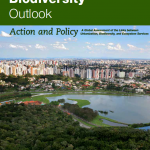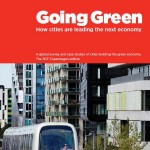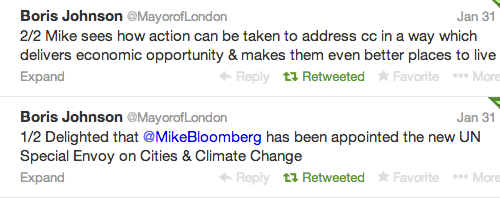Site search:
-
What’s new?
Energy for London Tags
Brent Buildings Camden Carbon Emissions CHP Cities Climate Adaptation Community Heating Community Initiatives Croydon Data DECC Decentralised Energy Distribution ECO Energy Costs Energy Efficiency Enfield FIT Fuel Poverty Funding Green Deal Hackney Haringey Housing Islington Lambeth Library Local Authorities Mayor Newham Ofgem Olympics Photovoltaics Planning RE:FIT RE:NEW Renewable Energy Retrofit Southwark Tower Hamlets Transport Waltham Forest Waste WestminsterEnergy Archives:
- February 2021 (1)
- January 2021 (15)
- December 2020 (15)
- November 2020 (9)
- October 2020 (3)
- August 2020 (5)
- July 2020 (3)
- June 2020 (4)
- April 2020 (10)
- March 2020 (5)
- February 2020 (2)
- January 2020 (3)
- October 2019 (1)
- September 2019 (4)
- August 2019 (2)
- July 2019 (1)
- August 2018 (1)
- November 2016 (8)
- October 2016 (8)
- September 2016 (2)
- August 2016 (8)
- July 2016 (14)
- April 2016 (12)
- March 2016 (16)
- February 2016 (8)
- January 2016 (4)
- December 2015 (1)
- November 2015 (1)
- October 2015 (16)
- September 2015 (3)
- June 2015 (1)
- May 2015 (1)
- April 2015 (1)
- March 2015 (1)
- February 2015 (1)
- January 2015 (1)
- December 2014 (18)
- November 2014 (4)
- August 2014 (8)
- July 2014 (7)
- June 2014 (25)
- May 2014 (8)
- April 2014 (4)
- March 2014 (12)
- February 2014 (7)
- January 2014 (13)
- December 2013 (11)
- November 2013 (15)
- October 2013 (15)
- September 2013 (18)
- August 2013 (5)
- July 2013 (20)
- June 2013 (33)
- May 2013 (8)
- April 2013 (16)
- March 2013 (25)
- February 2013 (14)
- January 2013 (20)
- December 2012 (23)
- November 2012 (23)
- October 2012 (25)
- September 2012 (14)
- July 2012 (12)
- June 2012 (43)
- May 2012 (20)
- April 2012 (8)
- March 2012 (40)
- February 2012 (39)
- January 2012 (40)
- December 2011 (22)
- November 2011 (40)
- October 2011 (33)
- September 2011 (48)
- August 2011 (40)
- July 2011 (58)
- June 2011 (41)
- May 2011 (80)
- April 2011 (38)
- March 2011 (33)
- February 2011 (25)
- January 2011 (24)
- December 2010 (3)
- November 2010 (7)
- October 2010 (6)
- September 2010 (7)
- August 2010 (1)
- July 2010 (2)
- June 2010 (4)
- May 2010 (1)
- March 2010 (3)
- February 2010 (3)
- December 2009 (5)
- November 2009 (2)
- October 2009 (3)
- July 2009 (3)
- June 2009 (1)
- April 2009 (1)
- March 2009 (1)
- February 2009 (1)
- January 2009 (1)
- December 2008 (2)
- October 2008 (1)
- September 2008 (1)
- July 2008 (1)
- March 2008 (2)
- January 2008 (2)
- October 2007 (1)
- September 2007 (3)
- July 2007 (1)
- March 2007 (1)
- February 2007 (3)
- November 2006 (3)
- August 2006 (1)
- February 2006 (1)
- May 2005 (1)
- February 2004 (1)
Tag Archives: Cities
“inner-city areas are often the most heat-energy efficient”
21 May 2014: “New research shows that the compact, taller buildings typical of inner-city areas are often the most heat-energy efficient – research by LSE Cities at the London School of Economics and the European Institute for Energy Research looked specifically at the role building design can play at the impact of the basic configurations of residential buildings (“urban morphology”) on energy demand. This impact is a result of two principal determinants of the thermal performance of buildings: the level of exposure to sunlight, which allows buildings to absorb passive solar heat; and the relative amount of external walls, which lead to heat losses” – read full Guardian article here.
Posted in Energy Efficiency, News
Tagged Buildings, Cities, Energy Efficiency, Heat Maps
Leave a comment
Lighting London
April 2014: Interesting LSE Cities event: “With the arrival of LED and ‘smart’ technologies, lighting has become an increasingly important area of interest and concern for planners, architects and designers. Debates around urban illumination are driven by the global narrative of the ‘sustainable city’, but also specific aesthetic motifs, issues around safety and security as well as light pollution. Despite this centrality, light is relatively invisible….” How poetic… and how true. Gotta be worth going to!
Taking place at 10.30am on 24 April – details here.
New Cities & Climate Change Envoy appointed
3 February 2014: Following on from a recent announcement that London’s former climate change and energy advisor had been appointed to head up the C40 Cities climate and energy initiative, news that the President of the Board of C40, former New York mayor Michael Bloomberg, has been appointed as the UN’s first Special Envoy on Climate Change and Cities. The World Bank’s news release states:
“…building low-carbon cities – is critically important. The United Nations Special Envoy for Cities and Climate Change needs to be a visionary who ruthlessly pushes to reach bold targets as quickly as possible. The selection of Michael Bloomberg is inspired. He has the potential of helping mayors across the world turn their cities into clean metropolises that dramatically reduce emissions of dangerous levels of pollutants into the atmosphere. The potential global good is enormous: Estimates show if the world’s cities take a low-carbon development path, we could cut global greenhouse gas emissions by 10 giga-tons, or 30 percent of the world’s emissions, which is twice the annual carbon footprint of the entire European Union.”
This new post builds on an announcement made by the World Bank in October 2013 of a new Low-Carbon Livable Cities (LC2) Initiative – more of which here.
And good to see our own Mayor welcoming the creation of this new position:
C40 Cities Climate Leadership Group Mayors’ Summit
January 2014: The C40 Cities initiative is to hold its high-level biennial summit in Johannesburg next month – February 4th-6th. The theme of the event is ‘Towards resilient and liveable Megacities– demonstrating action, impact and opportunity” and details of the event can be found on the conference website here. The Mayor of London will not be attending, but it has been announced that the Mayor’s Energy & Environment advisor, Matthew Pencharz, will be present on the Mayor’s behalf at the conference.
Transforming Cities
January 2014: Report of a meeting held by the Rockerfeller Foundation’s Resilient Cities programme – Transforming Cities: Visions of a Better Future – provides some case studies of how global cities are responding to increasing demands for energy. Linked to this, one of the report’s ‘key insights’ is that “Scarce resources, unknowns such as climate change and mass migrations into cities will overwhelm existing city planning capacity.” A sobering read of future city-stresses.
Integrating Environmental Thinking to ‘Make a City Great’
October 2013: A recent report by McKinsey sets out that “By 2030, 60 percent of the world’s population will live in cities. That could mean great things for economic growth—if the cities handle their expansion wisely.” How to Make a City Great sets out how city leaders need to ‘Integrate Environmental Thinking’ into their economic decision-making – highlighting work already underway providing ‘green’ retrofits of existing buildings to developing entire green districts, with a summary provided of technologies deployed in such districts in various cities around the world.
City Power Play: 8 Ways Local Energy Policies Can Boost the Economy
October 2013: Really interesting new report by US-based organisation, the Institute for Local Self-Reliance, describing how “dozens of cities are boosting their local economies while dramatically reducing greenhouse gases“. City Power Play: 8 Practical Local Energy Policies to Boost the Economy provides case studies on various US cities which have used the following routes to help promote energy efficiency and renewables through the following actions:
- Municipal utilities
- Community choice aggregation
- Building energy codes
- Building energy use disclosure
- Local tax authority
- Solar mandates
- Permitting
- Local energy financing
A lot to learn from this excellent analysis, which can be downloaded here.
Cities & Biodiversity Report Released
 October 2013: A new study released by the UN Environment Programme focussing on how “Increasing urbanization over the next decades presents not only unprecedented challenges for humanity, but also opportunities to curb climate change, reduce water scarcity and improve food security, according to the world’s first global assessment on the relationship between urbanization and biodiversity loss” was released earlier this week in New York. The full news release can be read here. The study – Cities and Biodiversity Outlook – here. A short film – An Urbanising Planet – based on the study can be seen here.
October 2013: A new study released by the UN Environment Programme focussing on how “Increasing urbanization over the next decades presents not only unprecedented challenges for humanity, but also opportunities to curb climate change, reduce water scarcity and improve food security, according to the world’s first global assessment on the relationship between urbanization and biodiversity loss” was released earlier this week in New York. The full news release can be read here. The study – Cities and Biodiversity Outlook – here. A short film – An Urbanising Planet – based on the study can be seen here.
FOE Cities & Carbon briefing
May 2013: Short briefing from Friends of the Earth entitled: ‘Cities – a synthesis of literature on the topic’ – which includes an outline of recent work undertaken on the impact of cities on carbon emissions (direct link here).
Going Green – How cities are leading the next economy
 October 2012: LSE Cities report providing an up-to-date overview on the experiences of how cities around the world are making the transition to the green economy.
October 2012: LSE Cities report providing an up-to-date overview on the experiences of how cities around the world are making the transition to the green economy.
The report sets out that London is a leading ‘electric vehicle pioneer’ [p85] stating that “Over the last decade, London has become a prominent leader in progressive transport policies and is globally recognized for introducing congestion charging, the upgrading of public transport and more recently the promotion of cycling. These policies have contributed to a steady drop in car ownership across London, from an average of 0.81 cars per household in 1995 to 0.76in 2011. The city has also seen the introduction of about 2,300 electric vehicles, the largest number in any city to date, and for has been leading on the development of charging infrastructure for over five years.”
The report can be downloaded from the LSE cities website here.
Further information on the promotion of EV’s in London can be obtained through Source London and Mayor’s Electric Vehicles Delivery Plan. Progress on EVs in London was set out in a response to a recent mayoral question:
- It remains my aspiration that London be the electric vehicle capital of Europe with 100,000 EVs as soon as possible. London is already making good progress towards achieving this and is recognised as a leader in this area.
- The Source London EV charging network already the largest network in the UK – has around 700 charge points and is on target to have 1,300 by 2013, providing confidence for the growing EV market. This sits alongside grant support for home charging units with an offer due to launch in June.
- There are currently 2,400 electric vehicles and 27,500 hybrid vehicles registered in Greater London – some 16% and 23% respectively of all such vehicles registered in the UK – and these figures continue to grow. TfL are pro-actively working with the Energy Saving Trust to target fleets operating in London to boost their uptake of EVs.
Top 20 Cities with Billions at Risk from Climate Change
July 2012: With the weather we’re currently experiencing, it’s interesting to read this Bloomberg article setting out that “More than 130 port cities around the world are at increasing risk from severe storm-surge flooding, damage from high storm winds, rising and warming global seas and local land subsidence. Poorly planned development often puts more people in vulnerable areas, too, increasing risk. About $3 trillion of assets are at risk today, a tally on track to reach $35 trillion by 2070, according to an ongoing study by the Organization of Economic Cooperation and Development.” Click through the slides to see the 20 port cities most vulnerable to climate extremes – which doesn’t fortunately include London.
London is however likely to face increased challenges associated with flooding – as set out in chapter 3 of the Mayor’s Climate Change Adaptation Strategy which highlights that:
- Nearly 15 per cent of London lies on the former flood plains of London’s rivers”
- A significant proportion of London lies within the Thames tidal floodplain and without the protection afforded by the tidal flood defences, much of that area would flood twice a day, everyday on each high tide
- The last tidal flood in London was in 1928, when 14 people drowned in Pimlico. In 1953, London narrowly escaped damage whena tidal surge inundated large parts of Kent and Essex, killing over 300 people. This resulted in the construction of the current Thames tidal defences, an integrated system comprising the Thames Barrier, 185 miles of floodwalls, 35 major gates and over 400 minor gates.
- The Thames Barrier has been operational since 1982 and has been closed over 100 times to protect London from flooding
The Museum of London’s 2011 ‘Postcards from the Future’ exhibition imagined what London might look like as a result of a number of future stress factors, including climate change. The 14 striking images, which include wind turbines in Piccadilly Circus, a nuclear power station in Kew Gardens and palm oil cultivation in Hyde Park, can be viewed here.
Exploring the Role of Cities and Buildings in the Green Economy
July 2012: A short paper produced by the US Green Building Council (USGBC), and launced at the recent Rio+20 sustainable development conference, which captures conversations taken across the US on current barriers to improving the energy efficiency of buildings. The conclusions have many parallels to problems faced here in London and the UK, including issues such as low awareness of the potential of energy savings, financial barriers and regulatory hurdles. The paper can be downloaded here (scroll half way down linked page).


